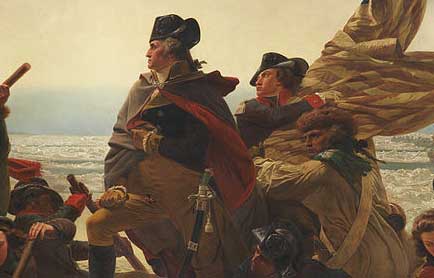Economics During the Revolutionary War

By Marc Schulman
The ongoing boycott of British goods had changed patterns of consumption for almost a decade before the actual start of the war. Many Americans willingly adjusted their established consumption patterns, with women across the colonies producing homespun clothes and other domestic items to fill the gaps created by the boycott. Once the war began, however, economic conditions changed rapidly. Trade was interrupted, so cheap imports and smuggled goods became scarce and, thus, expensive. Furthermore the British control of the seas made the export of continental commodities very difficult and expensive. In addition, the value of American paper currency which the Continental government printed was constantly decreasing . It was backed only by the guarantee of the Continental Congress and the States standing behind it, a guarantee that was only valid as long as the US won. Everyone in the Continental Army was paid in this paper currency, except for spies, whose services were deemed so vital that they merited special payment in gold.
As the financial demands of the revolution grew, the provisional American government sunk deeper into financial difficulties. Although the idea of a national currency, which took root shortly after the beginning of the war, had benefits in uniting the rebellious colonies, it allowed Congress to print money , and to spend it as quickly as it printed it. This led to a severe depreciation of the currency, the most dramatic depreciation in American history.
Besides printing money, Congress funded its revolution with loans. Britain's European competitors were logical parties to approach for aid, so Benjamin Franklin and Silas Deane sailed to Europe. They helped secure a substantial loan from the French Farmers General in 1777, in exchange for the delivery of American tobacco. By 1781, direct foreign aid had been obtained from France, the Netherlands, and Span. Since most of these loans were spent in Europe, purchasing war supplies, they did not affect the money supply in the colonies, so that very little of the war-time currency depreciation could be directly attributed to them.
Congress also tapped into domestic funding sources. The Continental Loan Office was established to sell bonds. The bonds were supposed to pay four percent , depending upon a patriot victory. Few people purchased bonds, since they could invest their money in private loans, which garnered interest rates was 4 to 14 percent higher than the Continental bonds. Congress make adjustments to the interest rate and conditions of payment, which resulted in better bond sales, but still did not provide enough funds to make the venture worthwhile. In 1781, the Continental Loan Office was closed. Congress also turned to individuals such as Robert Morris and Haym Salomon, who helped secure loans, as well as sinking their personal finances into the revolutionary effort. Many such individuals were financially ruined by the war, since Congress was slow to repay these loans. In fact, Salomon was never repaid by the government of the United States, nor were his efforts of behalf of the patriot cause officially recognized until the twentieth century.
.
 >
>